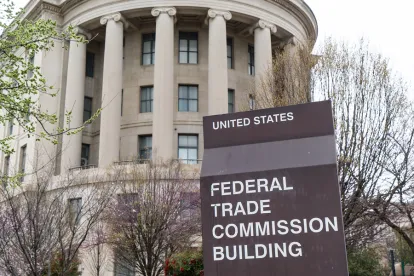Change is the only constant of late at the Federal Trade Commission (“FTC”). Newly confirmed Chair Lina Khan has wasted no time in using her three-Democrat majority to overhaul the Commission’s merger enforcement practices. At the beginning of July, Chair Khan wielded party-line votes to rescind the FTC’s 2015 policy statement that imposed guardrails on the agency’s so-called standalone antitrust authority under Section 5 of the FTC Act, which prohibits “unfair methods of competition.” Later that month, the Democratic Commissioners voted to rescind the FTC’s 1995 policy statement that limited when parties to merger settlements were required to seek prior approval for future transactions. The Vertical Merger Guidelines, which are meant to give parties insight into how the antitrust agencies analyze mergers of firms that are in a buyer-seller relationship, are the latest to fall to Chair Khan’s axe.
On September 16, 2021, the FTC voted 3-2 to withdraw its support for the Vertical Merger Guidelines, which were jointly adopted by the FTC and the Antitrust Division of the U.S. Department of Justice (“DOJ”), and the Commission’s commentary on vertical merger enforcement. The FTC’s rescinding of policies without issuing new guidance, coupled with the destabilizing blows to the premerger notification filing program under the Hart-Scott-Rodino Act that we discussed recently, leaves merging parties in the lurch, forcing them to navigate the merger review process in the dark. To add to the confusion, the FTC and DOJ may be applying different policies with regard to vertical mergers, as the DOJ Acting Assistant Attorney General Richard A. Powers issued a statement hours after the FTC’s vote that, although the Department is reviewing the Vertical Merger Guidelines, they currently remain in place at the DOJ.
Background Information
The aim of the Vertical Merger Guidelines is to give parties insight into how the FTC and DOJ analyze “vertical” mergers of firms or assets at different stages in the same supply chain, “diagonal” mergers that combine firms or assets at different stages of competing supply chains, and vertical issues that can arise in mergers of complements. The Guidelines were issued in June 2020 along a party-line vote, with the three Republican Commissioners and the then-Republican-led DOJ supporting the Vertical Merger Guidelines over the vehement opposition of the two then-minority Democratic Commissioners. As we discussed at the time, the Democratic Commissioners pushed back hard against the Guidelines’ presumption that a vertical merger eliminates double marginalization (“EDM”) and, as a result, is procompetitive.
President Biden, in his July 9 executive order aimed at bolstering competition, specifically recommended that the FTC and DOJ review and consider revising the guidelines for both vertical mergers and “horizontal” mergers of current and potential competitors (the “Horizontal Merger Guidelines”) in order “to address the consolidation of industry in many markets across the economy.” That same day, FTC Chair Khan and DOJ Acting Assistant Attorney General Powers issued a joint statement that the antitrust agencies intended to jointly review the vertical and horizontal guidelines “to determine whether they are overly permissive” and update them “to reflect a rigorous analytical approach consistent with applicable law.”
Partisan Divide over Withdrawal of Vertical Merger Guidelines and Commentary
In their majority statement, the Democratic Commissioners explained that the FTC is withdrawing its approval of the Vertical Merger Guidelines “to prevent further industry or judicial reliance on certain flawed provisions,” particularly those related to the “purported procompetitive benefits (i.e., efficiencies) of vertical mergers” and the treatment of EDM. Chair Khan emphasized in her remarks that the Guidelines “contravene statutory text, improperly suggesting that efficiencies or ‘procompetitive effects’ may rescue an otherwise lawful transaction.” She also criticized the Guidelines’ suggestion that EDM is a likely feature of vertical deals, “despite extensive economic learning and empirical evidence noting the highly limited set of conditions under which EDM may transpire.”
In voting to withdraw the Vertical Merger Guidelines, the majority reaffirmed its commitment to working closely with the DOJ to review and update the agencies’ merger guidance. The majority statement sets forth several areas that the FTC will focus on during its review. First, the FTC will “explore clear and administrable guidance on the characteristics of transactions that are likely unlawful” in order to “provide market participants with clear notice, reduce burdens on antitrust enforcers, and aid judges by allowing them to focus on observable facts that tend to predict anticompetitive effects rather than on complex and speculative claims.” Second, the Commission will seek to provide clear guidance on when remedies are likely to be ineffective in order to “help identify scenarios where a challenge is more likely than a settlement.” And, third, the FTC will expand upon the list of harms that can arise from vertical deals identified in the Guidelines in order to account for “various features that often characterize firms in the modern economy, including in digital markets” and also provide guidance on how the agency will analyze the impacts of mergers on labor markets.
The majority statement closes with the promise that “the FTC will issue updated guidelines or rules to ensure our merger analysis aligns with market realities” and states that, in the interim, “the Commission will rely on its statutory authority to apply existing laws when assessing proposed transactions.” In her statement, Commissioner Rebecca Kelly Slaughter reiterated that, until new guidelines are issued, “the Commission will be guided by the law, expressed in statute and jurisprudence,” and that “the catalogue of harms in the 2020 Guidelines continues to be valid, though non-exhaustive.” Noting that “few transactions are purely horizontal or vertical,” she also suggested working to develop “a single set of Merger Guidelines that accurately reflect contemporary market realities and economic literature.”
The Republican Commissioners asserted that the FTC was sowing confusion in the market by leaving companies with no clear idea of how the Commission will review vertical mergers. “[T]he FTC leadership continues the disturbing trend of pulling the rug out under from honest businesses and the lawyers who advise them, with no explanation and no sound basis of which we are aware,” stated Commissioners Noah Joshua Phillips and Christine S. Wilson in their dissenting statement. Commissioner Wilson expressed her concern that the FTC’s withdrawal from the Guidelines, “together with other recent attacks on the Hart-Scott-Rodino merger review process, threatens to chill legitimate merger activity and undermine attempts to rebuild our economy in the wake of the pandemic.”
In addition to arguing that the majority is “removing guidance and failing to replace it, reducing clarity in the application of the law,” Commissioner Phillips also pointed out during the open meeting that the DOJ and FTC now are applying different standards to review vertical deals. “This is bad government. It is bad policy,” he stated.
Key Takeaways
-
Merging parties may face a different type of vertical merger analysis depending on which agency reviews their deal.
-
Going forward, the FTC may be less likely to quickly clear or settle vertical deals.
-
The DOJ is reviewing both the Horizontal Merger Guidelines and the Vertical Merger Guidelines “to ensure they are appropriately skeptical of harmful mergers.” Although the Department may defer any significant policy changes until after Jonathan Kanter is confirmed by the Senate as Assistant Attorney General, the agency already has identified several aspects of the Vertical Merger Guidelines that “deserve close scrutiny” and has pledged to work closely with the FTC to revise them as appropriate.
-
Given Chair Khan’s speedy overhaul of FTC enforcement and her stated commitment to review both the vertical and horizontal guidelines, the Horizontal Merger Guidelines (last updated in 2010) may be next up on the FTC’s chopping block.





 />i
/>i
